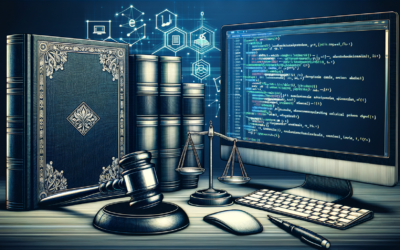Jurimetry
Like many other fields, the legal world is undergoing a major digital revolution. Jurimetry, as an emerging segment of law and technology, is at the heart of this evolution.
What is Jurimetry?
Jurimetry is the science that applies quantitative and statistical methods to the analysis of law. It enables legal outcomes to be measured and predicted, using vast judicial data sets. If we compare the rich history of predictive justice with today’s legal analytics capabilities, it becomes clear that jurimetrics is the next logical step towards a deeper understanding of judicial mechanics.
Origins and importance
Historically, jurimetry has its roots in the work carried out by researchers and lawyers in the mid-twentieth century. Its importance has grown with the advent ofartificial intelligence and legal big data, which have facilitated large-scale data collection and analysis.
Impact on legal practice
Jurimetry has the potential to transform legal practice by bringing precision to decision-making, reducing costs, and optimizing the management of legal projects. It is particularly valuable for firms carrying out automated due diligence or engaging in complex legal transactions.
Use in consulting and forecasting
Jurists use jurimetry not only to advise their clients more effectively, but also to predict the likely outcome of litigation. This is made possible by legal algorithms based on historical analyses of court decisions.
Jurimetry in the judicial system
The legal system itself benefits from jurimetry, in particular to streamline processes and promote theautomation of judicial procedures. Judgments become more predictable, contributing to greater transparency and predictability of the law.
Ethics and jurimetry
The integration of jurimetry also raises questions of ethics and governance, particularly in terms of data confidentiality and algorithmic bias, recurring challenges in the field of legal cybersecurity.
Tools and platforms
In the burgeoning legal technology market, many legal bid ding tools and platforms are starting to integrate jurimetry functionalities. They provide legal professionals with resources for paperless administrative formalities and overall optimization of their business.
Issues and challenges
While jurimetry holds great promise, it also faces a number of challenges, such as harmonizing legal data and training lawyers in statistical analysis tools. Legal design and automatic natural language processing are two complementary disciplines that are evolving simultaneously to meet these challenges.
Adoption by professionals
Resistance to change is natural, but the adoption of jurimetry by the legal sector is accelerating as its benefits become apparent. Professionals are modernizing their practices, relying in particular on legal hacking tools to better understand and predict legal decisions.
Training and education
Legal education is also adapting, integrating jurimetrics into its curricula to prepare future lawyers for the new reality of an increasingly data-driven field.
Frequently asked questions
Here is a list of frequently asked questions about jurimetry.
What’s the difference between jurimetry and predictive justice?
Jurimetry is a broader field that encompasses the use of statistics and quantitative analysis in law, while predictive justice focuses specifically on the prediction of judicial decisions based on historical data.
Can non-lawyers use jurimetry?
Yes, jurimetrics can be used by non-lawyers, including data scientists and analysts working in collaboration with legal professionals.
Can jurimetry reduce the cost of justice?
In theory, jurimetry can help reduce costs by making legal processes more efficient and predictable, which can lead to a reduction in protracted litigation.




